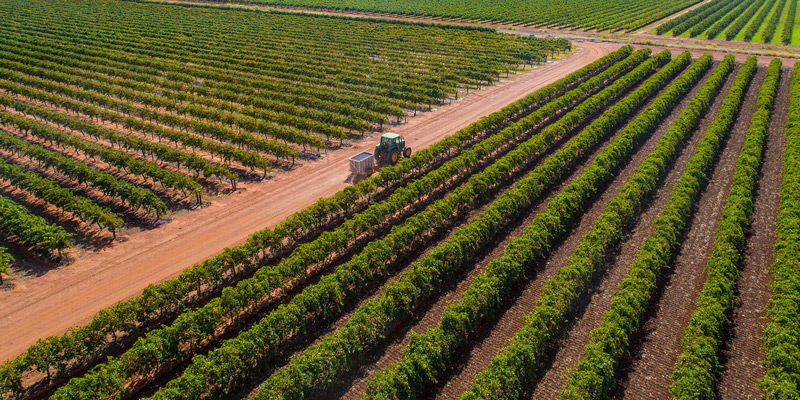12 July 2022
Climate change mitigation
The latest report from the world’s most authoritative body on climate change – the Intergovernmental Panel on Climate Change (IPCC) – assesses global progress in mitigating climate change, and highlights sources of global emissions to help countries identify the best opportunities to reduce their own emissions.
Effective responses to climate change involve actions to both adapt to locked-in climate change and to mitigate its effects. Climate change mitigation involves reducing greenhouse gas emissions and removing carbon dioxide from the atmosphere to limit further warming of our climate.
Early action is needed to ensure a livable future
The latest report from the IPCC – Climate Change 2022: Mitigation of Climate Change, the Working Group III contribution shows that to limit future climate warming to 1.5 °C (above pre‑industrial levels), global emissions must peak before 2025 and reduce rapidly across all sectors throughout 2030, 2040 and 2050. By 2030, global emissions will need to be reduced by 43%, which includes reducing methane emissions by about a third.
The IPCC report highlights the energy and agriculture sectors as 2 of the biggest global contributors of greenhouse gas emissions. They hold the hold the greatest opportunities to reduce emissions and limit further climate change.
The energy sector includes burning fossil fuels for electricity generation and transport, and the agriculture sector includes methane emissions from livestock such as sheep and cattle. With the information from the latest IPCC report, NSW can identify further opportunities to reduce net emissions, through both direct reductions and removing more carbon dioxide from the atmosphere (known as carbon sequestration).
Current trends
From 1990 to 2018, global greenhouse gas emissions from human activities continued to rise. In contrast, NSW’s greenhouse gas emissions from human activities have been declining since 2007. This is mostly because of reduced emissions from both the energy sector, and the land use, land use change and forestry (LULUCF) sector. In the LULUCF sector, the reduction in net emissions has occurred mostly from the ability of some land uses to absorb carbon dioxide from the atmosphere. The sector now absorbs more carbon dioxide than it releases, turning it into a net sink of emissions.
For the energy sector, emissions from electricity generation reduced due to the rise of renewable energy options, improvements in energy efficiency, and lower fugitive emissions from coal and gas production. However, these energy emission reductions are being offset by the continued growth in transport emissions.
Despite this overall declining trend, NSW’s emissions will need to reduce consistently and at a faster rate than base case projections to support international efforts to keep global warming to well within 2°C above pre‑industrial levels.
What is being done, and what more can we do?
The good news is that low-carbon technologies, such as wind and solar, are becoming more efficient and cost-effective.
NSW is well-placed to lead emissions reductions and take advantage of the benefits and opportunities that emerge along the way. As the Treasurer and Minister for Energy, the Hon. Matt Kean states, ‘Acting now is in the best interests of our people, environment and economy.’
NSW is already taking advantage of this progress, and has the policy framework, targets and key policies in place to support reducing emissions across all sectors. NSW Climate Change Adaptation Strategy sets clear priorities and key decision-making principles to help all NSW stakeholders adapt to the significant risks that NSW faces under climate change.
The Net Zero Plan Stage 1: 2020-2030 is the first stage of the NSW Government’s goal to transition to net zero emissions by 2050. This first stage includes an updated goal to achieve an interim target of reducing emissions by 50% by 2030 (compared with 2005 levels).
Under the Net Zero Plan, NSW has the foundations to make meaningful progress towards net zero emissions in both the energy and agriculture sectors. This includes:
- access to renewable energy resources, and policies are in place to support the transition from fossil fuels to renewables.
- Through NSW’s agriculture and land use industries, which have high potential for carbon sequestration through activities such as regenerating vegetation as supported through the Primary Industries Productivity and Abatement Program.
- Support to advance innovations to reduce emissions, such as under the NSW Government’s clean technology innovation initiative.
- Opportunities for low-carbon industries and jobs are emerging, and are being boosted through the NSW Government’s $1.05 billion Net Zero Industry and Innovation program.
Different sectors across NSW have already adopted mitigation strategies and made progress in reducing their emissions, and these are supported under the Net Zero Plan.
Renewable energy
In 2018–19, 38% of NSW emissions were from electricity generation, 20% from transport, and 9% from fugitive emissions from coal and gas industries. Since then, emissions have decreased, largely because of the increase in renewable energy options such as wind, solar and hydro power. These technologies are becoming more accessible and affordable to households and businesses across NSW, helping to achieve net zero emissions while also helping people save on their energy costs..
NSW is perfectly suited to transition to 100% renewable energy. As a state, we already have established wind turbines, solar farms, and world-class hydro power. With further action, NSW can lead the nation in producing clean energy that is reliable and affordable.
A major part of supporting emissions reduction in NSW’s energy and electricity sector is establishing the state’s first Renewable Energy Zones (REZs). These zones will connect renewable energy generation with battery storage and power lines, to provide clean energy to homes and businesses across NSW. REZs are planned and supported by the NSW Government’s Electricity Strategy and Electricity Infrastructure Roadmap.
As the electricity grid decarbonises (shifts away from fossil fuels to renewable energy), new opportunities emerge for the transport and industry sectors to increase their energy efficiency and reduce emissions through electrification. The NSW Government is supporting decarbonization by electrification, through initiatives such as the NSW Electric Vehicle Strategy and the business decarbonisation support program.
Low emissions products and carbon markets in the land sector
Agriculture and related land uses are vital for NSW’s economy. However, the land sector is a major emitter of greenhouse gases. For example, in 2018–19, agriculture produced 12% of NSW’s emissions, consisting mostly of methane from cattle and sheep production. Land clearing for agricultural purposes also contributes to emissions in the LULUCF sector. There are unique opportunities within the land sector to not only reduce emissions, but to also remove carbon dioxide from the atmosphere through carbon sequestration in vegetation and soil – this will speed-up progress towards net zero.
Supporting industries in the land sector to reduce emissions is needed for NSW to reach net zero emissions, and for the future resilience of our industries. One of the ways the NSW Government is supporting primary producers across NSW is with a $125 million investment to drive sustainable land management, boost productivity and help reduce emissions. This investment, through the Primary Industries Productivity and Abatement Program (PIPAP), will help futureproof NSW’s primary industries.
PIPAP offers a range of support for NSW’s primary producers, from advice on carbon opportunities to direct funding to reduce emissions. The program will help unlock new revenue streams for primary producers, while also benefiting NSW’s environment and biodiversity.
Mitigation and adaptation – together, at all scales – are key
Mitigating climate change can happen at all scales, from the energy sector to other industries, state and local government, businesses and households.
Acting now to reduce emissions will help reduce future climate impacts on NSW. However, the average annual temperature over NSW has increased by 1.4°C since 1910, and it is warming faster than the global average rate. With future warming already locked in, we need to implement both mitigation and adaptation actions. This will help NSW seize opportunities and ensure the best possible future for its people, industries and environment.
Integrated climate action to both adapt to climate change and mitigate its effects stands to yield a range of co-benefits including to our economy and the environment.
For more information on the IPCC’s assessment of global adaptation to climate change, see New evidence from the IPCC to help NSW adapt to climate risks. The latest report from the IPCC – Climate Change 2022: Mitigation of Climate Change, the Working Group III contribution – is the third part of the IPCC’s Sixth Assessment Report. The Sixth Assessment Report also includes the Working Group I and II reports and synthesis reports to provide the world with the best available science on climate change.
Recent news

High school students from across Western Sydney and the Central Coast gathered at Powerhouse Castle Hill for the Future Leaders Forum to explore climate leadership. Presented in collaboration with the NSW Department of Climate Change, Energy, the Environment and Water, the forum brought together students to connect and voice new perspectives on climate change and its impacts.

The NSW Government hosts three events for Climate Action Week Sydney in March 2025

Climate change is driving more frequent and intense heatwaves in NSW, posing risks to health, infrastructure, and the environment. The Greater Sydney Heat Smart City Plan aims to enhance heat resilience through collaborative efforts and adaptive strategies, ensuring a safer, cooler future for Sydney.
